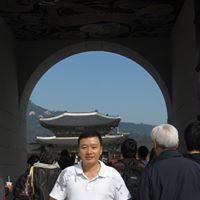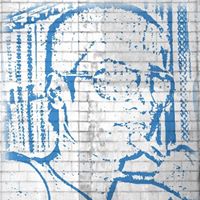Cuong Manh Le
age ~63
from Naples, FL
- Also known as:
-
- Cuong M Le
- Cuong Ann Le
- Cuong Ngoc Le
- Cal C Le
- Calchong M Le
- Cuong Lemanh
- Cuong Lecal
- Cuong Lee
- Cal Cle
- Cuowg Mawh Le
- Phone and address:
-
8303 Ibis Cove Cir, Naples, FL 34119
2393041418
Cuong Le Phones & Addresses
- 8303 Ibis Cove Cir, Naples, FL 34119 • 2393041418
- 8372 Laurel Lakes Blvd, Naples, FL 34119 • 2396829806
- Smyrna, GA
- Marco Island, FL
- San Jose, CA
Work
-
Company:Andrew ndt engineering
-
Address:44755 S Grimmer Blvd Ste E, Fremont, CA 94538
-
Phones:5106238607
-
Position:Manager
-
Industries:Search, Detection, Navigation, Guidance, Aeronautical, and Nautical Systems and Instruments
Education
-
School / High School:Florida Coastal School of Law
Ranks
-
Licence:Georgia - Active Member in Good Standing
-
Date:2009
Resumes

Cuong Le Milpitas, CA
view sourceWork:
LUMASENSE TECHNOLOGIES Incorporated
Feb 2014 to 2000
Sr. Test Technician ETTUS RESEARCH LLC, A National Instruments Company
Santa Clara, CA
Oct 2010 to Jan 2014
Test Technician MERU NETWORKS Corporation
Sunnyvale, CA
Oct 2007 to Sep 2010
Sr. Hardware Technician PYCON Incorporated
Santa Clara, CA
Jun 2001 to Sep 2007
Sr. Test Technician CELESTICA Corporation
San Jose, CA
May 2000 to May 2001
Engineering Technician SANMINA Corporation
San Jose, CA
Jun 1998 to Apr 2000
Engineering Technician AVEX Corporation
San Jose, CA
Jun 1995 to May 1998
Test Technician MAXELL Corporation
Santa Clara, CA
Jun 1994 to May 1995
Test Operator
Feb 2014 to 2000
Sr. Test Technician ETTUS RESEARCH LLC, A National Instruments Company
Santa Clara, CA
Oct 2010 to Jan 2014
Test Technician MERU NETWORKS Corporation
Sunnyvale, CA
Oct 2007 to Sep 2010
Sr. Hardware Technician PYCON Incorporated
Santa Clara, CA
Jun 2001 to Sep 2007
Sr. Test Technician CELESTICA Corporation
San Jose, CA
May 2000 to May 2001
Engineering Technician SANMINA Corporation
San Jose, CA
Jun 1998 to Apr 2000
Engineering Technician AVEX Corporation
San Jose, CA
Jun 1995 to May 1998
Test Technician MAXELL Corporation
Santa Clara, CA
Jun 1994 to May 1995
Test Operator
Education:
Mission College
Santa Clara, CA
2002
Associate in Science in Computer Electronics Technology Polytech Institute
Santa Clara, CA
1998
Certificate of RF Microwave Technician Advance Technology Institute
San Jose, CA
1997
Certificate of Electronic System Technician De Anza College
Sunnyvale, CA
1994
Certificate of Electronic Assembly
Santa Clara, CA
2002
Associate in Science in Computer Electronics Technology Polytech Institute
Santa Clara, CA
1998
Certificate of RF Microwave Technician Advance Technology Institute
San Jose, CA
1997
Certificate of Electronic System Technician De Anza College
Sunnyvale, CA
1994
Certificate of Electronic Assembly

Cuong Le San Jose, CA
view sourceWork:
Transera Communications
Mar 2013 to 2000
Product Support Engineer The John Stewart Company
San Jose, CA
Jan 2012 to Mar 2013
IT Administrator Support Digital Clubhouse Network
San Jose, CA
2010 to 2012
Digital Technology Project Coordinator
Mar 2013 to 2000
Product Support Engineer The John Stewart Company
San Jose, CA
Jan 2012 to Mar 2013
IT Administrator Support Digital Clubhouse Network
San Jose, CA
2010 to 2012
Digital Technology Project Coordinator
Education:
San Jose State University
San Jose, CA
Dec 2009
Bachelor of Science in Health Administration & Services University of San Francisco
San Francisco, CA
Masters of Science in Information System
San Jose, CA
Dec 2009
Bachelor of Science in Health Administration & Services University of San Francisco
San Francisco, CA
Masters of Science in Information System
Lawyers & Attorneys

Cuong Viet Le, Atlanta GA - Lawyer
view sourceAddress:
Deloitte Tax LLP
191 Peachtree Street, Suite 2000, Atlanta, GA 30303
4046313734 (Office)
191 Peachtree Street, Suite 2000, Atlanta, GA 30303
4046313734 (Office)
Licenses:
Georgia - Active Member in Good Standing 2009
Education:
Florida Coastal School of Law
License Records
Cuong Le
License #:
3024689 - Expired
Issued Date:
Jul 2, 2003
Expiration Date:
May 8, 2009
Type:
Manicurist Type 3
Name / Title
Company / Classification
Phones & Addresses
Owner
Pro Nails
Nail Salons
Nail Salons
1320 North Morrison Boulevard, Suite 124, Hammond, LA 70401
9853454977
9853454977
Owner
Pro Nails
Nail Salons
Nail Salons
1320 North Morrison Boulevard, Suite 124, Hammond, LA 70401
9853454977
9853454977
Manager
Andrew NDT Engineering
Search, Detection, Navigation, Guidance, Aero...
Search, Detection, Navigation, Guidance, Aero...
44755 S Grimmer Blvd Ste E, Fremont, CA 94538
Us Patents
-
Non-Contact Technique For Using An Eddy Current Probe For Measuring The Thickness Of Metal Layers Disposed On Semi-Conductor Wafer Products
view source -
US Patent:6407546, Jun 18, 2002
-
Filed:Apr 7, 2000
-
Appl. No.:09/545119
-
Inventors:Cuong Duy Le - Gilroy CA 95020
Anh The Ngo - San Jose CA 95132 -
International Classification:G01B 706
-
US Classification:324230, 324202, 324226, 324716, 324 711
-
Abstract:A method and system for identifying thicknesses of inspection samples, such as semiconductor wafers is presented. The method and system includes a probe housing, comprising an eddy current sense coil and a linear motion controller, and a computer that controls the linear motion controller and the eddy current sense coil. The computer may be configured to identify a thickness of the inspection sample by a method comprising the generation of a natural intercepting curve based on resistance and reactance measurements of at least two data points. Then, a plurality of corresponding resistance and reactance measurements of a location on the inspection sample is obtained with the eddy current sensor, where the eddy current sensor makes a first measurement at a first distance from the inspection sample, and makes each of the remaining plurality of measurements at a distance that is incrementally further away from the inspection surface. Next, an inspection sample curve is generated based on the plurality of corresponding resistance and reactance measurements obtained from the inspection sample. An intersection point between the natural intercepting curve and the inspection sample curve is also generated.
-
Eddy Current Measurements Of Thin-Film Metal Coatings Using A Selectable Calibration Standard
view source -
US Patent:6549006, Apr 15, 2003
-
Filed:Apr 17, 2001
-
Appl. No.:09/835975
-
Inventors:Cuong Duy Le - Gilroy CA 95020
-
International Classification:G01B 706
-
US Classification:324230, 324229, 324225, 702104
-
Abstract:A method for identifying metal layer thickness of an inspection sample according to one embodiment utilizes an eddy current probe to obtain initial resistance and reactance measurements from the inspection sample. Once these measurements have been obtained, the relative distance between the eddy current probe and inspection sample is increased and terminating resistance and reactance measurements are obtained. An inspection sample intersecting line may then be calculated using the initial and terminating resistance and reactance measurements. An intersecting point between a natural intercepting curve and the inspection sample intersecting line may also be determined. A reactance voltage of the intersecting point along a digital calibration curve is calculated to identify a closest two of a plurality of calibration samples. The metal layer thickness of the inspection sample may then be calculated by performing an interpolation between the identified closest two calibration samples.
-
Eddy Current Measuring System For Monitoring And Controlling A Cmp Process
view source -
US Patent:6741076, May 25, 2004
-
Filed:Apr 14, 2003
-
Appl. No.:10/417042
-
Inventors:Cuong Duy Le - Morgan Hill CA 95037
-
International Classification:G01B 706
-
US Classification:324230, 451 8, 702104, 702170
-
Abstract:A method for estimating a thickness profile of a substrate sample that has undergone a chemical-mechanical polishing (CMP) process includes obtaining initial and terminating resistance and reactance measurements from the sample. Initial eddy current measurement values are obtained while an eddy current probe is positioned at an initial distance relative to the substrate sample, and terminating values are obtained while the eddy current probe is positioned at a modified distance relative to the sample. An intersecting line can be calculated using the initial and terminating resistance and reactance measurements. An intersecting point between a previously defined natural intercepting curve and the intersecting line may also be determined. A reactance voltage of the intersecting point may be located along a digital calibration curve to identify a closest-two of a plurality of calibration samples. The conductive top layer thickness of the substrate sample can then be determined by approximating a location, using linear or non-linear calculations, of the reactance voltage relative to the closest-two of the plurality of calibration samples.
-
Standalone Eddy Current Measuring System For Thickness Estimation Of Conductive Films
view source -
US Patent:6762604, Jul 13, 2004
-
Filed:Apr 14, 2003
-
Appl. No.:10/417048
-
Inventors:Cuong Duy Le - Morgan Hill CA 98037
-
International Classification:G01B 706
-
US Classification:324230, 451 8, 702170
-
Abstract:A standalone eddy current monitoring system provides a thickness profile of a substrate sample by obtaining initial and terminating resistance and reactance measurements from the sample. Initial eddy current measurement values are obtained while an eddy current probe is positioned at an initial distance relative to the substrate sample, and terminating values are obtained while the eddy current probe is positioned at a modified distance relative to the sample. An intersecting line can be calculated using the initial and terminating resistance and reactance measurements. An intersecting point between a previously defined natural intercepting curve and the intersecting line may also be determined. A reactance voltage of the intersecting point may be located along a digital calibration curve to identify a closest-two of a plurality of calibration samples. The conductive top layer thickness of the substrate sample can then be determined by approximating a location, using linear or non-linear calculations, of the reactance voltage relative to the closest-two of the plurality of calibration samples.
-
Thickness Estimation Using Conductively Related Calibration Samples
view source -
US Patent:7019519, Mar 28, 2006
-
Filed:Aug 24, 2004
-
Appl. No.:10/924516
-
Inventors:Cuong Duy Le - Morgan Hill CA, US
-
International Classification:G01B 7/06
G01R 33/12 -
US Classification:324230, 324229, 324225, 702104
-
Abstract:A method for monitoring an inspection sample includes generating inspection data comprising resistance and reactance measurements that are obtained from an inspection sample having a conductive layer of unknown thickness. Calibration data is used for estimating the thickness of the conductive layer of the inspection sample. This calibration data includes resistance and reactance measurements obtained from one or more calibration samples, each calibration sample having a conductive layer of known thickness. The conductive layers of the inspection sample and the calibration samples comprise different materials having a known conductive relationship.
-
Eddy Current Measuring System For Monitoring And Controlling A Physical Vapor Deposition(Pvd) Process
view source -
US Patent:20030206008, Nov 6, 2003
-
Filed:Apr 14, 2003
-
Appl. No.:10/414845
-
Inventors:Cuong Le - Gilroy CA, US
-
International Classification:G01B007/06
-
US Classification:324/230000
-
Abstract:A method for estimating a thickness profile of a substrate sample that has undergone a physical vapor deposition (PVD) process includes obtaining initial eddy current measurement values while an eddy current probe is positioned at an initial distance relative to the substrate sample. Terminating values are obtained while the eddy current probe is positioned at a modified distance relative to the sample. An intersecting line can be calculated using the initial and terminating resistance and reactance measurements. An intersecting point between a previously defined natural intercepting curve and the intersecting line may also be determined. A reactance voltage of the intersecting point may be located along a digital calibration curve to identify a closest-two of a plurality of calibration samples. The conductive top layer thickness of the substrate sample can then be determined by approximating a location, using linear or non-linear calculations, of the reactance voltage relative to the closest-two of the plurality of calibration samples.
-
Integrated Eddy Current Measuring System For Monitoring And Controlling Multiple Semiconductor Wafer Fabrication Processes
view source -
US Patent:20030206009, Nov 6, 2003
-
Filed:Apr 14, 2003
-
Appl. No.:10/417046
-
Inventors:Cuong Le - Gilroy CA, US
-
International Classification:G01B007/06
-
US Classification:324/230000
-
Abstract:A system for monitoring a plurality of semiconductor fabrication systems includes a communication link between each of the semiconductor fabrication systems and the monitoring system. In operation, initial eddy current measurement values are obtained while an eddy current probe is positioned at an initial distance relative to the substrate sample, and terminating values are obtained while the eddy current probe is positioned at a modified distance relative to the sample. An intersecting line can be calculated using the initial and terminating resistance and reactance measurements. An intersecting point between a previously defined natural intercepting curve and the intersecting line may also be determined. A reactance voltage of the intersecting point may be located along a digital calibration curve to identify a closest-two of a plurality of calibration samples. The conductive top layer thickness of the substrate sample can then be determined by approximating a location, using linear or non-linear calculations, of the reactance voltage relative to the closest-two of the plurality of calibration samples.
-
Eddy Current Measuring System For Monitoring And Controlling A Chemical Vapor Deposition (Cvd) Process
view source -
US Patent:20030210041, Nov 13, 2003
-
Filed:Apr 14, 2003
-
Appl. No.:10/414846
-
Inventors:Cuong Le - Gilroy CA, US
-
International Classification:G01B007/06
-
US Classification:324/230000
-
Abstract:A method for estimating a thickness profile of a substrate sample that has undergone a chemical vapor deposition (CVD) process includes obtaining initial eddy current measurement values while an eddy current probe is positioned at an initial distance relative to the substrate sample. Terminating values are obtained while the eddy current probe is positioned at a modified distance relative to the sample. An intersecting line can be calculated using the initial and terminating resistance and reactance measurements. An intersecting point between a previously defined natural intercepting curve and the intersecting line may also be determined. A reactance voltage of the intersecting point may be located along a digital calibration curve to identify a closest-two of a plurality of calibration samples. The conductive top layer thickness of the substrate sample can then be determined by approximating a location, using linear or non-linear calculations, of the reactance voltage relative to the closest-two of the plurality of calibration samples.
Youtube
Myspace
Flickr
Plaxo

LE MANH CUONG
view sourceBình Dương, VIỆT NAM
Classmates

Cuong Le
view sourceSchools:
Macintosh High School Macintosh MN 1981-1985, Mcintosh-Winger High School Mcintosh MN 1981-1985
Community:
Anthony Tony

Cuong le
view sourceSchools:
Hapeville Elementary School Hapeville GA 1991-1995
Community:
Tricia Douglas, Marshall Lindley

Cuong le
view sourceSchools:
Village Del'Est Elementary School New Orleans LA 2001-2005
Community:
Daniel Fowler, Lan Pham, Shermon Thompson, Kyra Tran, Tuyet Nguyen, Shakari Mccall

Cuong le
view sourceSchools:
Eliza Chappell Elementary School Chicago IL 1992-1998
Community:
Bill Schey, Thomas Terlikowski, Marc Guerrero

Cuong Le
view sourceSchools:
Northern Alberta Institute of Technology Edmonton Azores 1987-1989
Community:
Douglas Murray, Gord Offord, Shona Patterson, Gaylia Joy, Leona Holt

Cuong le
view sourceSchools:
Da Nang High School Da Nang Viet Nam 1982-1986
Community:
Linh Mac, Vinh Tran, Chau Nguyen, Nhan Bui, Wat Tui, Tinh Ha

Cuong le (le Hung Cuong)
view sourceSchools:
Quan Bay High School Saigon Viet Nam 1968-1972
Community:
Chu Vo, Danh Nguyen, Thang Nguyen, Dinh Dinh, Xuan Nguyen

Cuong Le
view sourceSchools:
Abbeydale Elementary School Calgary Azores 1993-2000
Googleplus

Cuong Le
Lived:
San Jose, CA
Hinesville, GA
Barstow, CA
Germany
Hinesville, GA
Barstow, CA
Germany
Work:
Military Professional Resources Inc. - Staff Sergeant (2003)
Education:
Grantham University - Military Science
About:
From San Jose, CA. Currently in the Army and stationed in Germany.

Cuong Le
Work:
Saigontourist
Touguide
Touguide
Education:
University of Culture HCMC - Tourism Culture, University of Science and Humanities HCMC - English
Relationship:
Open_relationship
About:
I am jaunty, friendly, plite.I wanna make friend.Loving travel and reading book.

Cuong Le
Work:
Gia Tin Group - General manager
Galaxy media - Chaiman
Galaxy media - Chaiman
Education:
Học viện Báo chí và Tuyên truyền Hà Nội - Báo chí

Cuong Le
Work:
Hoan kiem
Education:
Ha noi, Quoc gia

Cuong Le
Work:
Cong ty std&s - Nhan vien (5)
Education:
Cao dang cong nghiep - Cong nghe co khi

Cuong Le
Work:
FPT Shop - Manager mobile
Education:
Cao đẳng - Quản Trị
Tagline:
Fpt shop là bước khởi đầu thành công. tôi tìm sự thật về tương lai của chính mình

Cuong Le
Work:
Nogia - Tp ky thuat
Education:
Bán Công Ekar

Cuong Le
Work:
HÒA BÌNH MINH - QL DỊCH VỤ
Education:
VIỆT NAM

Cuong Pham Le
view source
Cuong Nguyen Le
view source
Cuong Quyet Le
view source
Cuong Tien Le
view source
Cuong Bao Le
view source
Cuong Bruce Le
view source
Cuong Swaggeriffic Le
view source
Cuong Manh Le
view sourceGet Report for Cuong Manh Le from Naples, FL, age ~63













